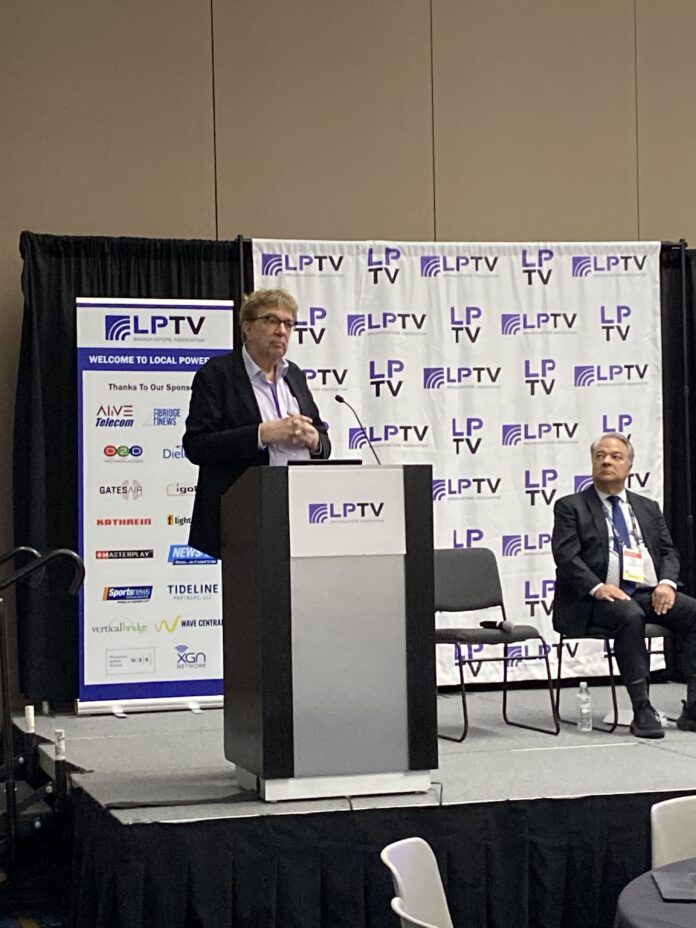If you have no understanding of what 3gpp time/frequency interleaving is, erase any notion in your head that it is about various broadcast standards such as ATSC 3.0, DVB-T2 and the like working together with 5G Broadcasting, says “SuperFrank” Copsidas, the low-power TV entrepreneur championing “5GB” in the U.S.
Doing so is pretty important, as the standards body for all 5G standards has approved interleaving, giving it a potentially big boost.
“It is about delivering packets multiple times in the time division and the frequency division of the signal,” says Copsidas, who has just returned to the U.S. from Madrid, where a “3gpp” RAN#106 plenary was held this week.
Still don’t understand what any of this techy lingo means? Copsidas explains, “Somehow that gives us a minimum of 5db of gain. It results in a more stable signal with larger throughput.”
And, he says the “3gpp” standards body has given the green light to 5G Broadcast time and frequency interleaving. It did so by approving a new work item for LTE-based 5G Broadcast Phase 2 with the primary objective to define a Time Frequency Interleaver (TFI), explains Thomas Stockhammer, Senior Director of Technical Standards in Qualcomm and IEEE Fellow who is based in Bergen, Bavaria, just west of Salzburg, Austria.
In real terms, Copsidas explains what this means.
“With time and frequency interleaving, which is a more robust delivery of data over the broadcast pipe, its performance will be equal to or greater than ATSC 3.0,” he says. “To be clear, this standard is not about interleaving different standards. That has been tabled for the time being. And, current 5G Broadcast in only in its first phase of 4G LTE 5G Broadcast. Once 5G Broadcast is in true 5G Release 19 and changes from e-mbms to fe-mbms, performance increases again by an additional 60%-70%.”
While 5G Broadcast is in its infancy, Copsidas claims support from cell companies, equipment manufacturers, and “the industry as a whole” is strong.
He also seeks to negate disinformation about 5G Broadcast by noting that has not yet been deployed anywhere as of yet, and adds several broadcast specific enhancements. “While not limited it targets UHF band, traditional broadcasters with broadcast infrastructure,” he says. “This is in contrast with e-mbms, which was run by cellular operators using cellular band and cellular infrastructure.”





